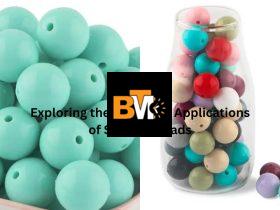In a world that’s changing fast, the classroom can’t afford to stay stuck in the past.
Ask any teacher today, and they’ll tell you: students are different. They’re not just bored by chalkboards and textbooks—they’re living in a digital world. So how do we meet them where they are? How do we turn a traditional classroom into a Classroom30x—a space built for engagement, creativity, and real-world learning?
Let’s break it all down.
What Is Classroom30x, Really?
Classroom30x isn’t about buying expensive tech or turning kids into robots. It’s about rethinking how we teach and learn—making classrooms more interactive, flexible, and connected to real life.
It’s about:
- Empowering students
- Using the right tools, not just shiny ones
- Building relationships, not just routines
- Fostering curiosity and collaboration
Sounds great, right? But let’s make it practical.
The Problem with the Old-School Classroom
Let’s go back for a minute.
Think about your own classroom experience. Rows of desks. A teacher talking for 40 minutes. A worksheet you rushed through just to go home.
Sure, it “worked” for some. But for most, it felt disconnected. There was little room for creativity, critical thinking, or collaboration. And if you didn’t learn best by listening, you were left behind.
In today’s world, that model doesn’t cut it anymore.
Anecdote: The Bored Genius
One teacher shared a story about a student named Malik. Super smart, always asking “why?” but constantly getting in trouble for talking too much or doodling during lessons.
Turns out, Malik wasn’t being disrespectful—he was bored. The classroom wasn’t built for him. Once his teacher let him create a video project instead of writing a report, he blew everyone away. That’s Classroom30x in action.
The Core Pillars of Classroom30x
If you want to build a Classroom30x, here are the 3 pillars to focus on:
1. Technology with Purpose
Tech isn’t the goal—it’s a tool. When used right, it boosts learning. When used wrong, it’s just a distraction.
Key tools for a modern classroom:
- Interactive whiteboards (like Jamboard or Miro)
- Student response systems (like Kahoot or Pear Deck)
- Learning management systems (Google Classroom, Canvas, etc.)
- AI tools for personalized feedback
- Project-based platforms (Padlet, Flipgrid, Canva)
But don’t just throw gadgets at your students. Always ask: Does this tool help students think deeper, create more, or collaborate better?
2. Human-Centered Teaching
Students aren’t just brains in seats. They have stories, emotions, and lives outside school.
Building trust is the most underrated teaching strategy. When students feel safe and seen, they take risks. They ask questions. They grow.
Try this:
- Greet students by name every day.
- Share your own failures and struggles.
- Let them give input on projects.
- Show them you care—really care.
3. Teamwork & Collaboration
Real-world skills require teamwork. Whether it’s solving problems, brainstorming ideas, or running a campaign, students learn better when they work together.
Instead of “group work,” try collaborative learning:
- Roles and responsibilities
- Clear goals
- Reflection time
- Peer feedback
Step-by-Step: How to Build a Classroom30x from Scratch
Here’s a no-fluff guide to transforming your classroom, one step at a time.
Step 1: Audit Your Current Setup
Start with what you have. Ask yourself:
- What’s working?
- Where are students disengaged?
- Do I have too much “sit and get” time?
- Are students collaborating or isolated?
Jot down your honest answers.
Step 2: Reframe Your Goals
Move from “covering content” to deep learning.
Instead of “Finish Chapter 3,” think:
- Can students create something using what they learned?
- Can they teach each other?
- Can they solve a real problem?
Start shifting from passive to active learning.
Step 3: Pick 1 or 2 Tools to Try
Don’t overwhelm yourself. Choose tools that align with your goals.
- Want more discussion? Try Flipgrid
- Want real-time feedback? Use Kahoot or Google Forms
- Want students to create? Go for Canva or Book Creator
Test it with one lesson. Reflect, refine, repeat.
Step 4: Redesign Your Space
You don’t need fancy furniture. Just flexibility.
- Try groups instead of rows.
- Use whiteboards on walls for brainstorming.
- Set up a “quiet zone” for focused work.
- Let students move when needed.
The goal is a space that supports choice and movement.
Step 5: Co-Create Norms with Students
Let students help design how the classroom works.
Ask them:
- What helps you learn?
- What shuts you down?
- What kind of space do we want to build together?
Then write your Classroom30x norms together. Put them on the wall. Live by them.
Step 6: Keep Parents in the Loop
Change can be scary for families. But if you share the why, most will support you.
Try this:
- Send a welcome letter explaining your new approach.
- Share photos of projects or group work.
- Invite parents to presentations or virtual showcases.
Big Wins from Going 30x
Still not sure if this is worth it?
Here are real benefits teachers report after shifting to a Classroom30x mindset:
- Higher engagement – even from students who used to check out
- More creativity – students take ownership and surprise you
- Stronger relationships – trust leads to fewer behavior issues
- Deeper learning – less memorizing, more understanding
- Better prep for the real world – students build collaboration, communication, and problem-solving skills
Common Mistakes to Avoid
Let’s be real. Change isn’t smooth. Here are pitfalls to watch for:
- Doing too much at once. Start small. One change at a time.
- Focusing on tools, not goals. Tech is great, but strategy comes first.
- Skipping student voice. If they’re not bought in, it won’t stick.
- Expecting perfection. Messy learning is still learning.
A Day in a Classroom30x
Let’s walk through a sample day:
8:00 AM – Morning Launch
Instead of silent bell work, students check in with a partner and share one goal for the day. Teacher asks a thought-provoking question.
8:15 AM – Mini Lesson
A quick 10-minute explainer. Then, students break into groups to research or create around the topic. One group makes a podcast, another builds a timeline, another creates a skit.
9:15 AM – Gallery Walk
Groups present. Students give feedback using “Glow and Grow” slips.
10:00 AM – Workshop Time
Students work on independent or passion projects. Teacher meets with small groups or one-on-one for support.
11:00 AM – Reflection Round
Before lunch, students share something they learned, struggled with, or want to explore more.
That’s what learning with life in it looks like.
Closing Thoughts: The Heart of Classroom30x
You don’t need to be a tech genius. You don’t need a brand-new building. You don’t need to overhaul everything overnight.
You just need to believe this:
Students learn better when they feel safe, heard, and challenged.
And you can build a space that makes that happen.
Start with one change. One conversation. One choice to trust your students more and control them less.
That’s the heart of a Classroom30x.







Leave a Reply